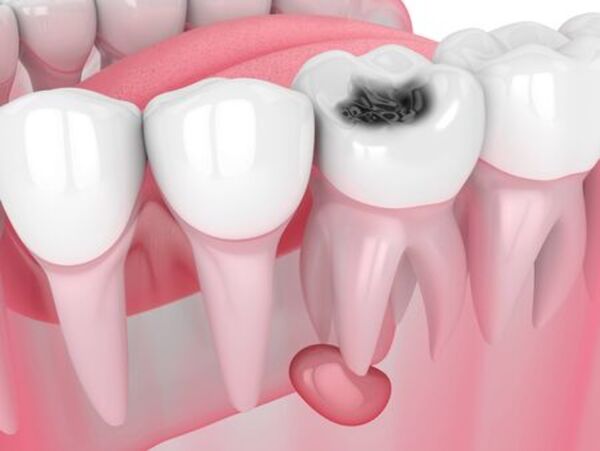What You Need To Know About Dental Cavities
Dental cavities can best be referred to as dental caries. As we all know, tooth decay is influenced by what we consume, how we look after our teeth, and the quantity of fluoride in our toothpaste. If your household has a history of tooth decay or teeth problems, then you might acquire it that way. This is extremely common, as many people acquire tooth issues that have been passed on from generation to generation.

Are Adults More At Risk When It Comes To Dental Cavities
Adults who suffer from a dry mouth are more at risk for cavities, as they have a lack of saliva in their mouth. Dry mouth is really common and is generally the result of medications, illness, and radiation treatment. Tobacco users will likewise struggle with dry mouth, as the tobacco will use up the saliva in the mouth and leave the user with nothing to keep his or her mouth moist.
Cavities are a really major problem and if left unattended, can result in the destruction of the tooth. This can also damage the nerves as well, resulting in an abscess. An abscess is really major, as it contaminates the root of the tooth. In extreme cases, and if left without treatment, an abscess can even lead to death. Although you might not understand it, cavities are a very serious matter that can rapidly spread to something much more life-threatening.
Regular Dentist Visits To Identify Dental Cavities
If you visit your dentist regularly, he will most certainly check for cavities. Without going to the dentist or an oral hygienist, it is impossible to establish whether or not you have a cavity. A lot of cavities develop below the gums, and you will not have the ability to see them. If the cavity exists in the tooth, you will have the ability to see it, as it will alter the color of the affected location. If you observe a color change or a blackened location in your tooth, you need to make an appointment with your dentist right away.
What you eat is also a huge factor when it comes to dental cavities. If you consume a lot of sugary foods or consume a lot of soda, you will be at a greater risk for cavities. Foods that are abundant in sugar or starch are consumed by germs discovered in plaque, which will produce acids that penetrate teeth. This acid is really harmful to teeth, as it can penetrate the dentin and enamel in no time at all. If you don’t do something about it, the acid will continue to eat at the tooth till there is nothing left. This will leave you with no choice but to get the tooth extracted.
Over time, the tooth enamel will start to break down underneath the surface area of your tooth, despite the fact that the surface area will appear to be intact. Once the acid has managed to gnaw enough of the enamel below the surface area, the surface area will collapse, which leads to dental cavities. After this has actually happened, and if you don’t get it treated, the tooth will continue to be consumed and the cavity will continue to spread out until all of the teeth have been eaten. Thereafter, the enamel will be gone and your root will be exposed – which can be very uncomfortable, if not very painful as well.
The Development of Dental Cavities
Cavities will more than likely develop in the pits of chewing locations around the back teeth, in between your teeth, or near the gum line. No matter where they happen, the most convenient way to spot them is to visit your oral hygienist or dentist. Your dentist will be able to do x-rays and find out how bad they are and tell you what choices you have. If you visit him in time, he will have the ability to conserve the tooth and stop the cavity before it spreads throughout the complete tooth.
Dental Insurance for Treating Dental Cavities
This is a type of health insurance that covers the cost of fillings and other dental procedures necessary to treat dental cavities. There are several types of dental insurance plans available, including those offered by employers, those purchased individually, and those provided through government programs.
The percentage of coverage offered for cavity treatments varies between plans, with some plans covering up to 100% of the cost of the procedure and others only covering a portion of the cost. Typically, dental insurance plans cover 50-80% of the cost of treatment for dental cavities, with the patient responsible for paying the remaining balance out of pocket.
In addition to the cost of the dental cavities procedure itself, there may be other out-of-pocket expenses associated with dental insurance for cavity treatments. These can include deductibles, co-payments, and annual limits on coverage. The annual limit is the maximum amount of coverage that the insurance plan will provide in a given year, and any costs beyond that limit will need to be paid for by the patient.
According to a recent survey by the National Association of Dental Plans, the average annual premium for an individual dental insurance plan is around $360, while the average annual premium for a family plan is around $680. The average out-of-pocket expense for a filling is around $70, with the cost varying depending on the size and location of these dental cavities.
Real-life coverage scenarios can help clarify how insurance for dental cavities treatments works. For example, if a patient has a dental insurance plan with an 80% coverage rate and a filling costs $200, the insurance will cover $160 and the patient will be responsible for paying $40. If the patient needs multiple fillings in a single year, they may hit their annual coverage limit and be responsible for paying the full cost of any additional procedures.








